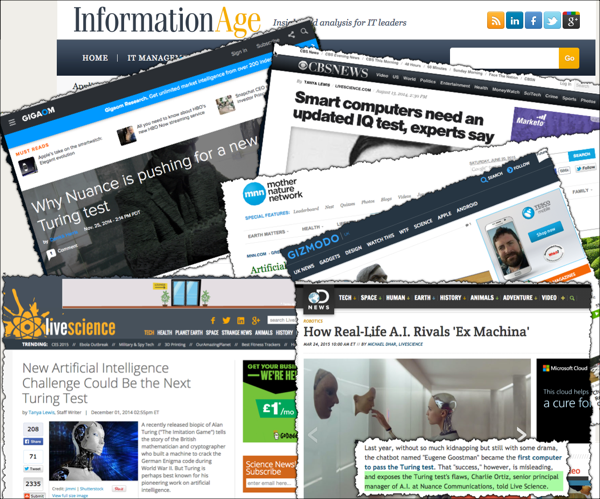Nuance ‘Turing Test’ Shows How to Get Links Before Link Building Begins
An experiment named for a British mathematician demonstrates the way that search marketers can use voice recognition software for link-building purposes.
An experiment named for a British mathematician demonstrates the way that search marketers can use voice recognition software for link-building purposes.
With any event-based link building campaign, there are three major stages of link building opportunity – before the event, during the event and after the event.
Perhaps one of the most neglected is the ‘before stage’, yet get this stage right and you create a powerful foundation on which to build your future success.
In the latest issue of The New Scientist magazine, I came across an article that featured an example of getting the ‘before stage’ absolutely right. The New Scientist article reported on advances in voice recognition technology.

Almost as an aside, the article reported that Nuance.com, the Massachusetts-based voice recognition software company who created the Dragon Naturally Speaking range of products, were going to launch “a Turing Test style challenge with voice systems early next year, with a $25,000 grand prize to the group that passes.”
The ‘Turing Test’ was named after Alan Turing, a British mathematician who helped break the Enigma cipher machine in the second world war. It was made famous by the movie Blade Runner,where it was used to determine whether a ‘subject’ was a real person or an android.
To win the Nuance challenge, a voice system must be able to match the ability of humans in understanding language. For example, by figuring out who the pronoun refers to in a sentence like this: “The trophy would not fit in the brown suitcase because it was too big.”
What was too big?
Simple for a human to answer, but not for an algorithm.
Tragically, Turing committed suicide after been convicted of committing homosexual acts, which was a criminal offence in the UK at that time. The standout for me was that the award was in the future – to be announced ‘early next year’. Digging deeper into the story, it’s clear that the prize has already attracted a lot of attention.
For example this story from Information Age that features a nice editorial link:

And there was lots of other coverage on sites including CBSNews.com, the Discovery Channel, Gizmodo.com, LiveScience.com, MNN.com, GigaOM.com and many others.

Remember, this is all coverage for a competition that has yet to run. So what are the elements that helped to make this work?
As well as the coverage and links this generated before the event actually happened, it also provided Nuance with something really valuable – a list of the journalists and bloggers who were genuinely interested in the topic.
A personal follow-up along the lines of “I liked your peace on the Turing Test, and thought you might like to know our latest news”, would likely attract more coverage.
And of course the prize would only be paid out if an artificial intelligence was successful in beating the test.
And if it was successful this would probably lead to a third wave of publicity.
This is the way that events can deliver maximum publicity and editorial links. Here are some good questions to ask about your upcoming campaigns:
Have you used the before, during and after approach successfully in your own link building? Please share your experience in the comments below.
Homepage image via DollarPhotoClub.com